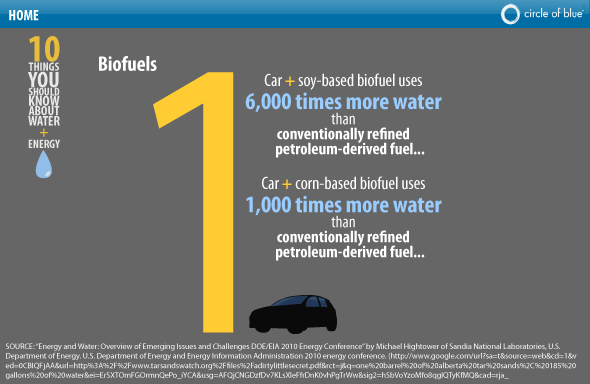-
Latin America’s Future: Emerging Trends in Economic Growth and Environmental Protection
›Economic development and environmental sustainability in Latin America and the Caribbean are intrinsically connected, as evidenced by a seminar this summer organized by the Woodrow Wilson Center’s Brazil Institute (on behalf of the Latin American Program), and co-sponsored by the U.S. Agency for International Development (USAID). The seminar — the culmination of six workshops and a regional meeting in Panama — presented the new Wilson Center report Emerging Trends in Environment and Economic Growth in Latin America and the Caribbean (also available in Portuguese and Spanish), which identifies key trends likely to shape the economy and natural environment in Latin America and the Caribbean over the next 10 years.
Janet Ballantyne, acting deputy assistant administrator of USAID’s Latin America and the Caribbean Bureau, stated that Latin America is “not our backyard, it’s our front yard.” It’s time that we “open the front door,” she claimed, and address the issues facing Latin America — issues that have long-term consequences for not only the region, but the United States and the world as well.
A Broad Range of Challenges
Christine Pendzich, principal author of the report and technical adviser on climate change and clean energy to USAID, covered the five interrelated economic and environmental trends that the report discusses: climate change, clean energy, indigenous and minority issues, challenges facing small economies, and urban issues. To capitalize on the Latin American demographic transition that will soon result in a large number of working age adults, Pendzich argued that the region needs to increase skilled job creation, educate workers to fill those positions, and maintain economic stability. She also declared that recent climate change trends are a “game changer,” which can fundamentally alter development paths.
While closer economic ties with China have contributed to Latin America’s above-average recovery from the global economic downturn, Pendzich argued that this economic relationship could add to the social and environmental problems facing the region. She added that insufficient innovation could lead to the continuation of the region’s dependence on commodity exports, while also noting that the inadequate economic integration and educational opportunities for indigenous and minority groups “drags everyone down.”
In terms of the regional economic trends, Eric Olson, co-author of the report and senior associate of the Mexico Institute, highlighted six challenges and opportunities for Latin America and the Caribbean. Olson claimed that the recovery of the global economy will hurt net importers of fossil fuels, especially in Central America and the Caribbean; have a negative impact on the environment; increase natural resource exploitation that may exacerbate inequality and social conflict; increase demand for primary products that will decrease the incentive to diversify Latin American economies; provide opportunities to promote environmentally friendly growth; and allow for increased utilization of existing trade benefits and intra- and sub-regional trade opportunities.
Recognizing the Need for an Integrated Response
Three of the 77 participants involved in the formation of the report explored in greater depth what Geoffrey Dabelko with the Environmental Change and Security Program described as the “integration and interconnectivity” of the five trends discussed in the report. Blair Ruble, chair of the Comparative Urban Studies Project, noted that with 78 percent of the Latin American population living in urban areas, “cities and urban life create a context in which there are opportunities for solutions to problems,” opportunities that can be used to further innovation, encourage social equality, and promote good governance.
Meanwhile, working with rural indigenous communities and minority groups can also provide valuable opportunities for change, specifically in the area of climate change, according to Judith Morrison, senior adviser at the Inter-American Development Bank’s Gender and Diversity Unit. Morrison argued that indigenous populations are the ones most affected by climate change, but also the most able to improve environmental stewardship as a result of their unique knowledge of the local geography.
Maria Carmen Lemos, associate professor at the University of Michigan, highlighted that vulnerability to climate change depends on two sets of factors: geographical location and socioeconomic factors. As a result, Lemos asserted that climate-change adaption measures must focus on poverty reduction as well as the vulnerability of specific geographic locations.
Julie L. Kunen, senior adviser to the Bureau of Policy, Planning, and Learning at USAID, applauded the report for its cross-trend analysis and called the development community to work together to address these trends in the Latin American and Caribbean region. The next step, Kunen claimed, must be to develop an ambitious strategy and “convene everyone who cares about the issues and rally them around the agenda.”
Elizabeth Pierson is an intern with the Brazil Institute at the Woodrow Wilson Center.
Photo Credit: “The River Runs Through the Andes,” courtesy of flickr user Stuck in Customs. -
The Effects of Climate Change on Water in South Africa and Tibet
›From Hydrology and Earth System Sciences Discussions, “Uncertainty in Water Resources Availability in the Okavango River Basin as a Result of Climate Change,” by D.A. Hughes, D.G. Kingston, and M.C. Todd, explores the effects of a two degrees Celsius global warming scenario on the Okavango River Basin, a “major natural resource for human water supply” shared by Angola, Botswana, and Namibia. The authors conclude that “there is a relatively high probability of large changes to the extent and duration of inundation within the delta wetland system during the 21st century,” and recommend multi-annual to decadal ecological assessments of assumed low rainfall and river flow to guide integrated river basin water management plans.
“Climate Change and Environmental Degradation in Tibet: Implications for Environmental Security in South Asia,” by P.K. Gautam in Strategic Analysis, argues for Tibet’s designation as a regional – if not global – common, for the sake of South Asian security. Tibet faces significant risk of ecological degradation due to climate change. Further degradation of its water supply would significantly affect India, China, and Southeast Asia. According to Gautam, establishing Tibetan autonomy would ensure greater ecological preservation, contrary to the rapid development model pursued by China. -
Women, Water and Conflict as Development Priorities Plus Some Geoengineering Context
›September 24, 2010 // By Geoffrey D. DabelkoHere are some useful links to environment, population, and security work that recently crossed my desk.
• NYU’s Richard Gowan dissects UK development minister Andrew Mitchell’s encouraging speech identifying conflict-affected states as special DFID priorities. Gowan pulls out highlights from the speech and parses NGO reaction to it on Global Dashboard.
• Council on Foreign Relations’ Isobel Coleman provides five practical suggestions for tapping into women as the “new global growth engine,” on Forbes.
• The Aspen Institute announced its Global Leaders Council for Reproductive Health this week. Their goal: meeting unmet demand for family planning services by 2015 on the MDG schedule. That is over 200,000,000 women who want services but do not have access.
• I’m heartened to see the U.S. Senate pass the Senator Paul Simon Water for the World Act. Hoping the House will follow suit. Last time Congress passed legislation on water, sanitation, and health priorities, the 2005 Senator Paul Simon Water for the Poor Act enjoyed overwhelming bipartisan support.
• Colby historian Jim Fleming, writing in Slate, puts the increasing fascination with geoengineering as a climate response “option” in some sobering historical context. “Weather as a Weapon: The Troubling History of Geoengineering” is the short read. Tune in to hear Jim present the book length version, Fixing the Sky, at the Wilson Center, October 6th at 10:30 am EST.
Follow Geoff Dabelko (@geoffdabelko) and The New Security Beat (@NewSecurityBeat) on Twitter for more population, health, environment, and security updates. -
Circle of Blue Launches ‘Choke Point: U.S.’ Series Examining Intersection of Water and Energy Resources
›Speaking yesterday at the Wilson Center, Circle of Blue Senior Editor and New York Times reporter Keith Schneider called his organization’s latest project, reporting on the intersection of finite water resources and growing demand for energy around the world, one of the most important stories of his career. First in the series is Choke Point: U.S.:
For as long as the United States has been a nation the central idea guiding energy development is to generate as much as the energy sector is capable of producing. In every way imaginable, though, the 21st century is testing the soundness of that principle. A number of environmental, economic, and political impediments lie in the path to large increases in American energy production.
For more check out Circle of Blue’s full feature as well their multimedia section, with infographics illustrating water regulations and power generation type by state, North Dakota’s remarkable rise to “domestic oil royalty,” and video interviews with residents and experts from around the country (including the Wilson Center’s Jennifer Turner, on China).
None, though, is more significant than the nation’s steadily diminishing reserve of fresh water. The place where rising energy demand collides with declining water supplies is a national choke point that the United States has barely begun to address, and certainly isn’t close to resolving.
Beyond the United States, Circle of Blue and the Wilson Center’s China Environment Forum also hope to start-up a “Choke Point: China” but are still seeking funding.
Image Credit: Graphic courtesy of Ball State University graduate student, Mark Townsend, and data compiled by Circle of Blue’s Aubrey Ann Parker and Andrea Hart. -
Alex Evans on Resource Scarcity and Global Consumption
› “Why should we be concerned with scarcity issues?” asks New York University’s Alex Evans. Beyond general population growth, there is also an expanding global middle class that is shifting to more Western diets and consuming more energy, he explains. The net result is that demand for food, water, oil, and land is outpacing supply. These scarcity issues should be grouped together, argues Evans, because you can’t address one without affecting the others.
“Why should we be concerned with scarcity issues?” asks New York University’s Alex Evans. Beyond general population growth, there is also an expanding global middle class that is shifting to more Western diets and consuming more energy, he explains. The net result is that demand for food, water, oil, and land is outpacing supply. These scarcity issues should be grouped together, argues Evans, because you can’t address one without affecting the others.
The “Pop Audio” series offers brief clips from ECSP’s conversations with experts around the world, sharing analysis and promoting dialogue on population-related issues. Also available on iTunes. -
U.S. v. China: The Global Battle for Hearts, Minds, and Resources
›September 22, 2010 // By Schuyler NullThis summer, Secretary Clinton gave a speech at the Association of Southeast Asian Nations (ASEAN) summit in Hanoi that Chinese Foreign Minister Yang Jiechi called “in effect an attack on China.” What did Clinton say that prompted such a direct response? She called for negotiations over the rights to resource extraction in the South China Sea to be multilateral rather than bilateral:
-
UN Millennium Development Goals Summit: PHE On the Side
›September 21, 2010 // By Wilson Center StaffFrom 20-22 September 2010, world leaders will meet in New York City to discuss the United Nations’ “We Can End Poverty 2015” Millennium Development Goals, which include food security, maternal and child health, and environmental sustainability as key objectives, but controversially, make no mention of population. Officially, there is only one small “side session,” organized by Vicky Markham of the Center for Environment and Population, devoted to talking about the MDGs in the integrated context of population, health, and environment (PHE).
Since 2005, annual Millennium Development Goals reports have published data from a large number of international organizations and UN agencies to track progress. According to the 2010 Millennium Development Goals Report, the 2008 economic downturn has stalled momentum to achieve the eight goals. The report also stated that “though progress had been made, it is uneven. And without a major push forward, many of the MDG targets are likely to be missed in most regions.”
While PHE remains somewhat taboo at the UN, The New Security Beat continues to highlight the important linkages between these issues. Check out some of our recent coverage including Calyn Ostrowski’s blogging from the 2010 Global Maternal Health Conference, perspectives on Pakistan’s ongoing environmental and development disaster, the World Bank’s latest report on international land grabs and their effect on food security, and our coverage of all things population, health, and environment.
Sources: AFP, United Nations.
Photo Credit: Adapted from “United Nations,” courtesy of flickr user Ashitakka. -
Environmental Disaster or Impetus for Cooperation?
Iraq: Steve Lonergan on the Southern Marshes
›September 21, 2010 // By Schuyler NullIraq’s Southern Marshes, once the Middle East’s largest and most ecologically diverse wetlands, have survived the Iran-Iraq war, systematic drainage by Saddam Hussein, American invasion, and record-breaking drought. Today, however, the prospects for survival are dimming, as water consumption across the region continues to increase and security remains unsettled. Despite these challenges, the marshes’ location along the Iranian border and their reliance on flow from Turkey upstream offers unique potential for environmental peacemaking in this troubled region.
Yearly archive for 2010.
Show all posts











